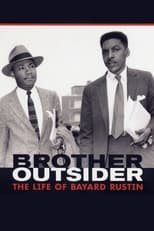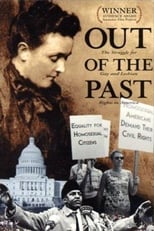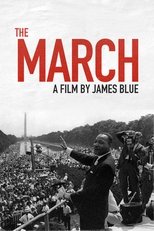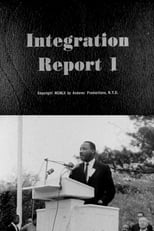

Bayard Rustin
Movies for Bayard Rustin...

Title: Bayard & Me
Character: Self (archive footage)
Released: January 20, 2017
Type: Movie
Bayard Rustin was the organizer of the The Great March on Washington and one of the leaders of the civil rights movement. In the 1980s, Bayard adopted his younger boyfriend Walter Naegle to obtain the legal protections of marriage. In this intimate love story, Walter remembers Bayard and a time when gay marriage was inconceivable. He reflects on the little known phenomena of intergenerational gay adoption and its connection to the civil rights movement.


Title: Trailblazer Honors
Character: Honoree (archive footage)
Released: June 27, 2014
Type: TV
One-hour annual event that celebrates leaders at the forefront of LGBTQ equality.


Title: Brother Outsider: The Life of Bayard Rustin
Character: Himself
Released: January 20, 2003
Type: Movie
Documentary on Bayard Rustin, best-remembered as the organizer of the 1963 March on Washington.


Title: Out of the Past
Character: Self
Released: July 31, 1998
Type: Movie
In 1995, Kelli Peterson started a gay and straight club at her Salt Lake City high school. The story of her ensuing battle with school authorities in interspersed with looks back at the diary of Michael Wigglesworth, a 17th-century Puritan cleric, at the 30-year love affair of Sarah Orne Jewett and Annie Adams Fields, at Henry Gerber's attempt after World War I to establish a gay-rights organization, at Bayard Rustin's role in the civil rights movement, and at Barbara Gittings' taking on of the American Psychiatric Association's position that homosexuality is illness. One person comments, "To create a place for ourselves in the present, we have to find ourselves in the past."


Title: King: A Filmed Record... Montgomery to Memphis
Character: Self (archive footage)
Released: March 24, 1970
Type: Movie
Constructed from a wealth of archival footage, the documentary follows Dr. Martin Luther King, Jr. from 1955 to 1968, in his rise from regional activist to world-renowned leader of the Civil Rights movement. Rare footage of King's speeches, protests, and arrests are interspersed with scenes of other high-profile supporters and opponents of the cause, punctuated by heartfelt testimonials by some of Hollywood's biggest stars.


Title: The March
Character: Self
Released: December 31, 1964
Type: Movie
The March, also known as The March to Washington, is a 1964 documentary film by James Blue about the 1963 civil rights March on Washington. It was made for the Motion Picture Service unit of the United States Information Agency for use outside the United States – the 1948 Smith-Mundt Act prevented USIA films from being shown domestically without a special act of Congress. In 1990 Congress authorized these films to be shown in the U.S. twelve years after their initial release. In 2008, the film was selected for preservation in the United States National Film Registry by the Library of Congress as being "culturally, historically, or aesthetically significant". (Wikipedia)


Title: Integration Report 1
Character: Self
Released: January 1, 1960
Type: Movie
Integration Report 1, Madeline Anderson's trailblazing debut, was the first known documentary by an African American female director. With tenacity, empathy and skill, Anderson assembles a vital record of desegregation efforts around the country in 1959 and 1960, featuring footage by documentary legends Albert Maysles and Richard Leacock and early Black cameraman Robert Puello, singing by Maya Angelou, and narration by playwright Loften Mitchell. Anderson fleetly moves from sit-ins in Montgomery, Alabama to a speech by Martin Luther King Jr. in Washington, D.C. to a protest of the unprosecuted death in police custody of an unarmed Black man in Brooklyn, capturing the incredible reach and scope of the civil rights movement, and working with this diverse of footage, as she would later say, “like an artist with a palette using different colors.”
